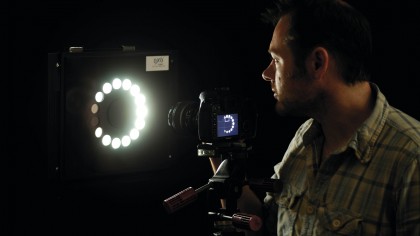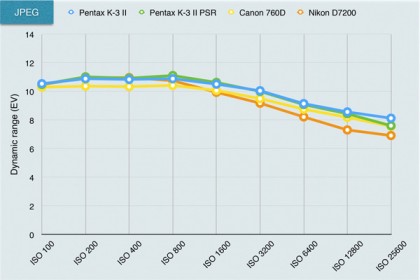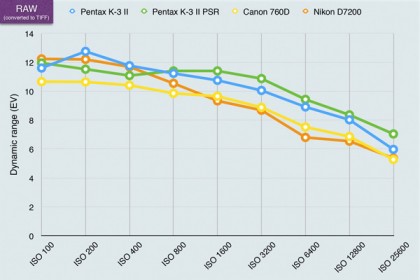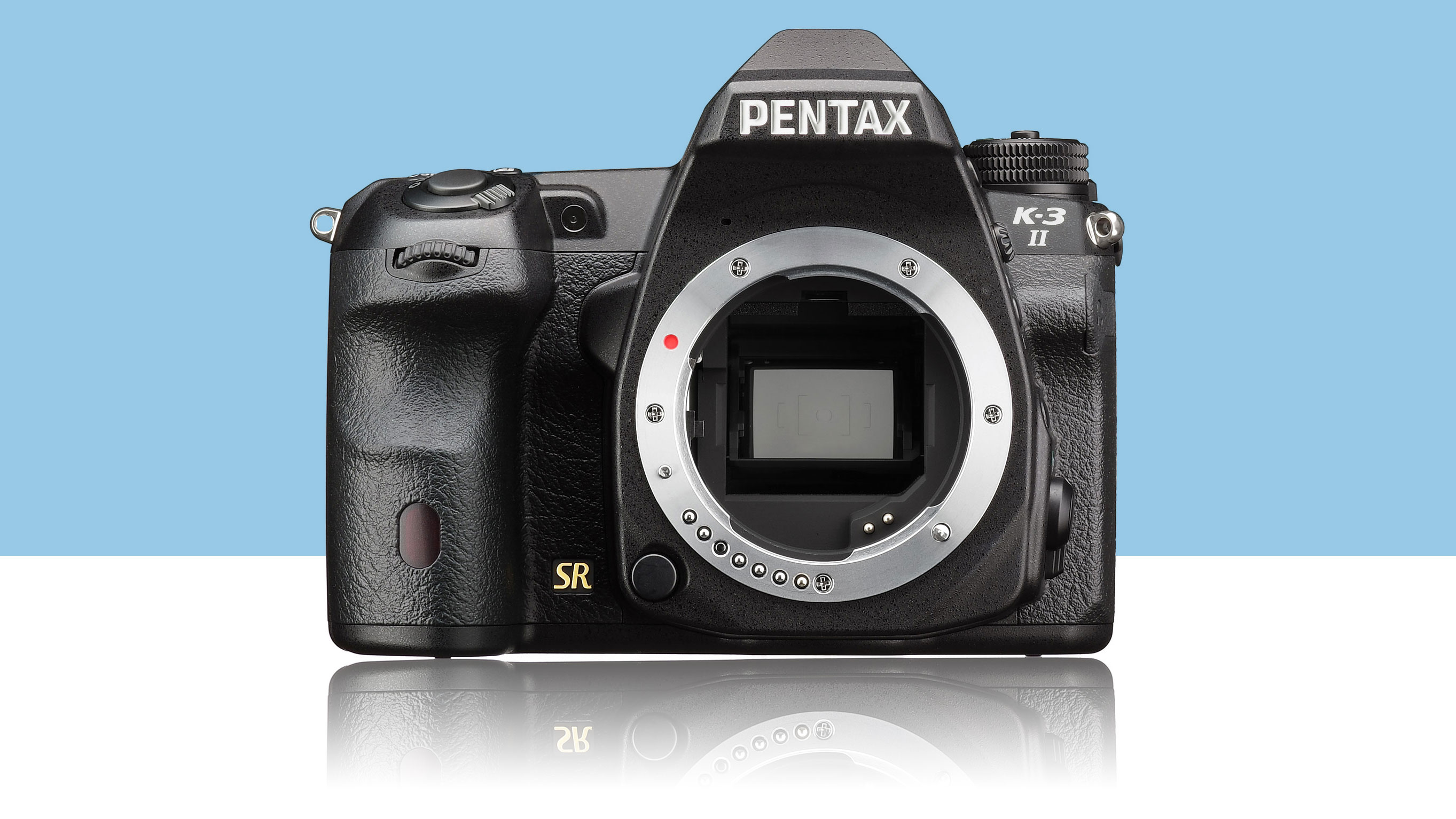Why you can trust TechRadar
Dynamic range is a measure of the range of tones the sensor can capture. Cameras with low dynamic range will often show 'blown' highlights or blocked-in shadows. This test is carried out in controlled conditions using DxO hardware and analysis tools.

Read: Noise and dynamic range results explained
Dynamic range is measured in exposure values (EV). The higher the number the wider the range of brightness levels the camera can capture. This falls off with increasing ISO settings because the camera is having to amplify a weaker signal. Raw files capture a higher dynamic range because the image data is unprocessed.
Dynamic range charts

JPEG dynamic range analysis: All three cameras produce dynamic range figures so close that they can't really be separated, though the D7200 does start to fall away from the others at higher ISO settings.

Raw (converted to TIFF) dynamic range analysis: The K-3 II's raw files offer a similar dynamic range to the Canon and Nikon at low ISOs, but it then starts to show a clear advantage as the ISO setting increases. Again, the Pixel Shift Resolution mode delivers a slight advantage.
Current page: Lab tests: Dynamic range
Prev Page Lab tests: Resolution Next Page Lab tests: Signal to noise ratioAmy has been writing about cameras, photography and associated tech since 2009. Amy was once part of the photography testing team for Future Publishing working across TechRadar, Digital Camera, PhotoPlus, N Photo and Photography Week. For her photography, she has won awards and has been exhibited. She often partakes in unusual projects - including one intense year where she used a different camera every single day. Amy is currently the Features Editor at Amateur Photographer magazine, and in her increasingly little spare time works across a number of high-profile publications including Wired, Stuff, Digital Camera World, Expert Reviews, and just a little off-tangent, PetsRadar.

